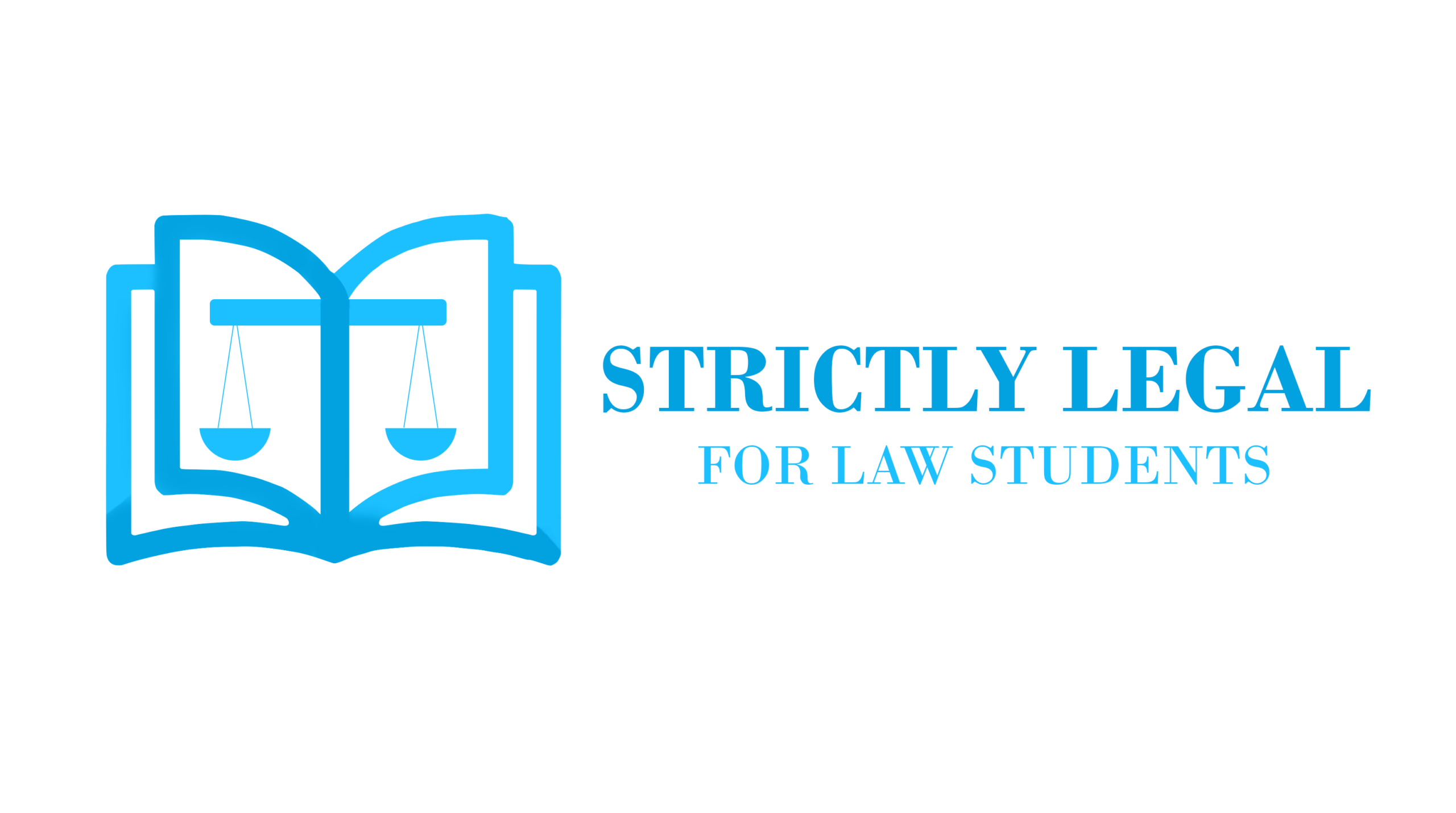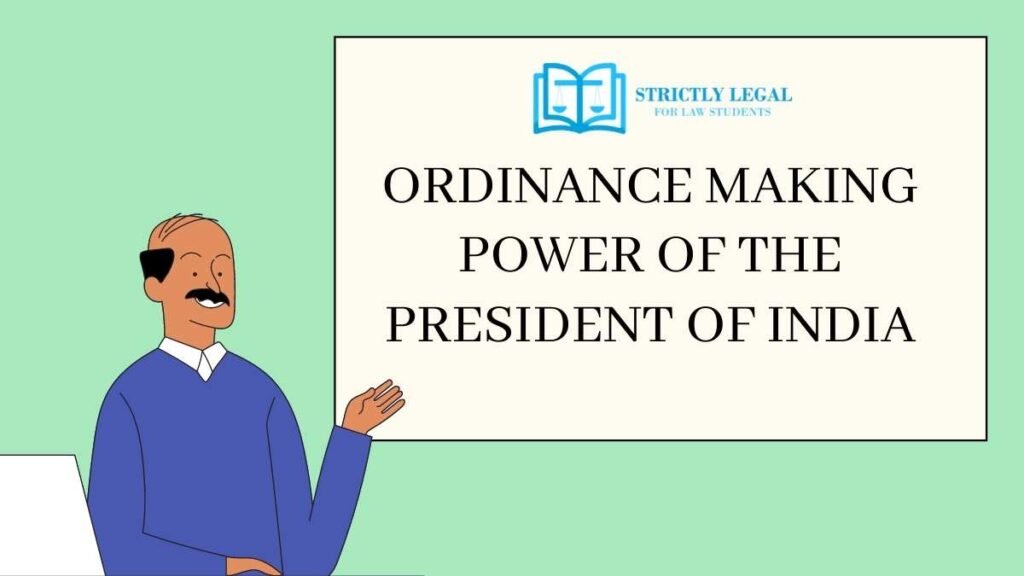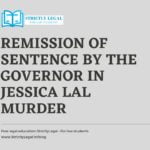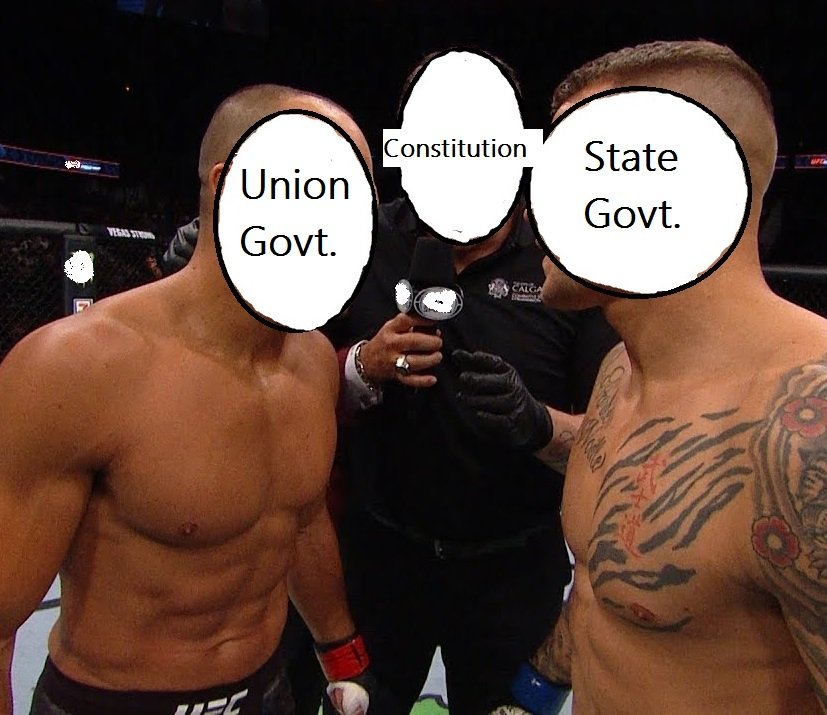Ordinance Making Power: The President of India has been given emergency powers to promulgate ordinances in situations where the Houses of Parliament are not in session. The ordinance-making power is an enabling provision, viz., a substantive part of the constitution from which certain specified consequences follow and it does not purport to be a complete code relating to the exercise of legislative or executive functions in given circumstances.
An ordinance, which is defined as “an order made by the President under Art. 123 has the same force and effect as an Act of Parliament – no more and no less”. The rule regarding promulgation of ordinances during recess of the session is found in Articles 123 in the Indian Constitution which read as follows:
Power of President to promulgate Ordinances during recess of Parliament
(1) If at any time, except when both Houses of Parliament are in session, the President is satisfied that circumstances exist which render it necessary for him to take immediate action, he may promulgate such Ordinance as the circumstances appear to him to require(2) An Ordinance promulgated under this article shall have the same force and effect as an Act of Parliament, but every such Ordinance
(a) shall be laid before both House of Parliament and shall cease to operate at the expiration of six weeks from the reassemble of Parliament, or, if before the expiration of that period resolutions disapproving it are passed by both Houses, upon the passing of the second of those resolutions; and
(b) may be withdrawn at any time by the President Explanation Where the Houses of Parliament are summoned to reassemble on different dates, the period of six weeks shall be reckoned from the later of those dates for the purposes of this clause (
3) If and so far as an Ordinance under this article makes any provision which Parliament would not under this Constitution be competent to enact, it shall be void
Article 123 in The Constitution Of India 1949
An emergency is some grave situation arising within or outside India, which needs immediate attention. The following situations are instances of emergencies- war, external aggression, armed rebellion etc. Articles 123 empowers the President to promulgate an Ordinance in case of an Emergency.
Article 123 empowers the President to promulgate Ordinance when both Houses of Parliament are not in session. In the above provision, if the President is satisfied that circumstances have arisen which render it necessary for him to promulgate an Ordinance, he can promulgate the same. However, every such Ordinance promulgated under this article shall have same force and effect as an Act of Parliament. This means that it can be enforced like a Legislature-enacted law, but on the other hand it can also be withdrawn at any time by the President.
An Ordinance is defined as an order made by the President under Art.123 which has same force and effect as an Act of Parliament, but will cease to operate at the expiration of six weeks from the reassembly of Parliament, unless approved by resolutions passed within that period by both houses of Parliament. If the Ordinance is not approved by both houses, then it would be withdrawn by President on the advice of Council of Ministers. The President can also withdraw an Emergency- promulgated Ordinance at any time, on his own and without a recommendation from the Cabinet.
An ordinance may be re-promulgated, but must be approved by Parliament within six weeks from its reassembly, else it would cease to operate.
Pre-Constitution ordinances:
The Government of India Act 1935 did not have a specific provision in that regard. However, ordinances were promulagated during the period of operation of that Act. These pre Constitution Ordinances included – The Cotton Cloth and Yarn Control Order, 1934 promulgated on 23.01.1936 The Trading Stocks (Temporary Regulations) Ordinance, 1936 promulgated on 24.01.1936 The Representation of the People(Amendment)Ordinance, 1937 promulgated on 26.05.1937
The Constituent Assembly set up a Drafting Committee to draft a Constitution for India as per the mandate given by British Government in August 1946. After preparing the initial drafts, Dr B R Ambedkar was entrusted to head this committee with other members – N Gopalaswamy Ayyangar, Alladi Krishnaswamy Iyer and K M Munshi etc.,
Thereafter, the very first Bill that was placed before the Constituent assembly for consideration and subsequent drafting into a complete constitution, was on 12.08.1946 – “The Indian Independence Bill”. This draft is also known as the “Objectives Resolution” which forms a part of our original Constitution till date.
In Art.13(3), the word ‘Ordinance’ has been used to mean an Order or Proclamation promulgated by President under Art 123 or 213 of the Constitution. Article 13(3) is reproduced below:
“13(3). The power of making Ordinance includes the power to amend any enactment whether past, present or future.” (Italics supplied) According to Dr H C Das (Constitutional Adviser to the Governor General of India) in his book, “The Constitution and its Working”, the word ‘amendment’ is used to mean: “Amendment: Power to alter or repeal wholly or in part. To change by an explicit declaration which may be express or implied”.
In this respect, Dr Das has stated that even the power to amend the Constitution was given by one of such ordinances. This view has been supported by another eminent Constitutional expert Shri T T Krishnamachari (former Finance Minister and Union Cabinet Minister). In his famous book ‘Indian Polity for Civil Services Main Examination’, Krishnamachari states: “No part of a Parliamentary law can be repealed or amended without its own consent.”
He further explains that if an Act of Parliament is repealed or amended by another valid legislation, then the Parliamentary Act so repealed or amended also ceases to exist. (i.e., it has no legal existence). That apart, the power of amending any part of a particular statute whether past, present or future cannot be delegated to any other authority. He stated: “It may well be noted here that the President’s power to promulgate ordinance does not include his power to amend an existing law by virtue of Art 123(2) parliament alone has this right.”
Dr H C Das observes that even though ordinances are issued under Art 213, they do not directly amend laws already in force; all such ordinances will stand repealed at the expiration of six weeks from the reassembly of Parliament.
Shri Krishnamachari gives a list of ordinances promulgated by President in exercise of his powers under Art 213 over a period of time. The last ordinance he lists is No.9 dated 11 April 1985, issued by Giani Zail Singh to amend Sec 2(b) and 3(1) of the Foreign Contributions Regulation Act 1976 – exactly after 6 weeks from the date on which the Assembly was prorogued sine die i.e., 16 May 1985 when President approved it for publication in official Gazette without making any changes in it. This ordinance published in Gazettes dated 25 May 1985 stood automatically repealed at the expiration of six weeks from 16 May 1985 for want of parliamentary approval.
The President of India is very much part of the Parliament but is not a member thereof. According to Dr Das, the power to promulgate an ordinance does not include the power to amend any of the provisions already in force. The President can neither repeal nor amend any Act of Parliament without approval of Parliament. If he amends any existing Act, it will be repealed by virtue of Art 213(2) read with 2(b) and 3(1) once it reassembles on 16 June 1985. Therefore, amendments made in Sec 2B and 3(1) through 9th Presidential ordinance dated 11 April 1985 stand automatically repealed and cannot become effective unless approved and passed by Parliament by way of an Act or amendment of the original Act.
The Constitution (Sixty-ninth Amendment) Bill, 1989 was introduced in Parliament by Shri Balram Jakhar on 22 November 1989 and passed on 25 July 1991 without any change. The Bill received Presidential assent on 10 August 1991 and came into force from 3 October 1991. It is now an Act of Parliament – Information Technology Act, 2000. It will continue to be in force until amended or repealed by a competent legislature i.e., either Parliament or State Legislature acting with approval of President under Art 368(2).
The petitioners have not challenged this amendment before the Supreme Court at any time either during the period when it was pending before Parliament or even after its enactment as an Act of Parliament. They have not challenged that amendment even now.
Article 368 of the Constitution is a self contained Code dealing with constitutional amendments. It was amended once in 1955 vide the First Constitution (Amendment) Act, 1951, whereunder Art 13A was introduced by which it was made “law” for Part III to be suspended during emergency Provisions of Article 20 were further relaxed as they are doing now . Again it was amended in 1963 when Art 31B(1) – 31B(4) were added at the instance of Shri K Kamraj who became President by dismissing Dr Sanjiva Reddy through an order dated 12 July 1969. After unsuccessfully trying to avoid holding elections on frozen symbol “Rising Sun”, he dissolved Lok Sabha on 19 March 1971 and again used his discretionary power under Art 356 to dismiss the Janata Government headed by Morarji Desai through an order dated 24 July 1975 appointing Shri Charan Singh as Prime Minister.
The present article 368 was amended in 1972 when a new clause (4) was added for insertion of a new Article 31C at the instance of Indira Gandhi who had been defeated in elections, withdrawn from office and disqualified from contesting elections for 6 years following her conviction in Yashpal Kapoor Case . In 1977 it was amended once more when 44th Amendment Act added Clause (1-A) expanding presidential powers under emergency provisions. In 1978 it was amended once after President Giani Zail Singh dissolved Lok Sabha without being satisfied that the situation necessitated emergency provisions.
The President is not bound to give assent even if a Bill has been passed by majority of total membership and 2/3rd majority of members present and voting in each House . This was held in 1973 in G Kesava v State of Kerala wherein it was said that president can withhold assent unless it is given with or without amendments or he may return the Bill for reconsideration. When President V V Giri returned Zamindari Abolition bill to Parliament, Dr Ambedkar justified non-assent on the ground that there might be an appeal against Supreme Court judgment in Binod Behari Lal Bhargava case which was still pending.
Similarly when Bihar Assembly sought use of emergency provisions to block release of Chandrashekhar Azad, President Giani Zail Singh said that he did not find it necessary to impose the restriction. He had returned Bihar Appropriation Bill calling for imposition of prohibition on liquor trafficking through Bihar when state government was unable to respond to Centre’s request for additional quota of police force for J&K .
The petitioner rightly relied upon People’s Union of Civil Liberties v Union of India where it was held that if a Bill is passed by 2/3rd majority in each House but either president or governor withholds assent, Parliament cannot validly make amendment so as to avoid such non-assent and Legislative Assembly cannot pass resolution seeking prior ratification. This decision is relevant inasmuch as article 368(2) is concerned but it can really relate to any provision of the Constitution which may be amended for avoiding non-assent.
It appears that Presidents have taken divergent attitudes. When President Rajendra Prasad returned Constitution (First Amendment) Bill, 1954 he said that “if Parliament through its majority does not approve what I have recommended, there could be no occasion for me to approve either”. He suggested thus creating an impasse . However President S D Sharma was more understanding when Bihar Assembly sought use of emergency provisions to block release of Chandrashekhar Azad asserting his right under Art 32 or Art 136, he said that there cannot be question of running away from duties imposed by Constitution and added “I shall not hesitate to take a stand on the ground of constitutional propriety and call for papers if necessary “.
In this situation, it is difficult to say that President has unfettered powers as contended by the petitioner. In some cases Presidents have returned Bills for reconsideration as in case of Zamindari Abolition Bill, 1955 as already mentioned. In Vajravelu’s case it was said that President cannot withhold assent unless he gives reasons or sends it back with specific directions. It is argued that Art 74(2) does not say so but can’t a statute framed under ordinary legislative power be required to lay down any procedure which may be followed by legislature . If it does then such a statute would override constitutional provisions. It was therefore held that there is no constitutional necessity for President to give reasons or send Bill back with specific amendments.
Therefore, the president has merely recommendatory powers and he need not sign a bill within 30 days after it is presented to him; it may be sent back with his comments and remarks as also the recommendation whether he should give his assent to such a bill. The advice tendered by the council of ministers will thus receive due consideration from the president and then only he would endeavour to exercise his discretion on that matter. It is true that if it appears that the president had not applied his mind , but if circumstances reveal that he made some inquiry and formed some opinion even though belatedly, there can be no ground to say that he did not consider the advice tendered by the council of ministers.
There are other decisions which indicate that Presidents have not acted unreasonably in exercising their powers . The decision of Punjab High Court in Sant Ram v State will be relevant. There also it was said that if there is appearance to show that President has applied his mind or even if he has made some inquiry or formed opinion, courts cannot interfere unless circumstances reveal that he did not consider the advice tendered by the Council of Ministers.
Relevant UPSC Questions
An ordinance can be passed by the president when both the houses of the parliament is not in session. The issued ordinance must be ratified by both the houses within 6 weeks of assembly. It must also be noted that no constitutional amendment can be passed via ordinance.
The president of India and the Governor of the state legislature has the power to issue ordinance under Article 123 and 213 of the Indian Constitution.
There’s no specific provision dealing with this part of the question. To set a standard, the BJP’s current government has re-promulgated four ordinances in a span of last 2 years

Users not registered with Strictlylegal can Email us their content and the same are posted through this account. In case of abuse, kindly let us know at [email protected]




